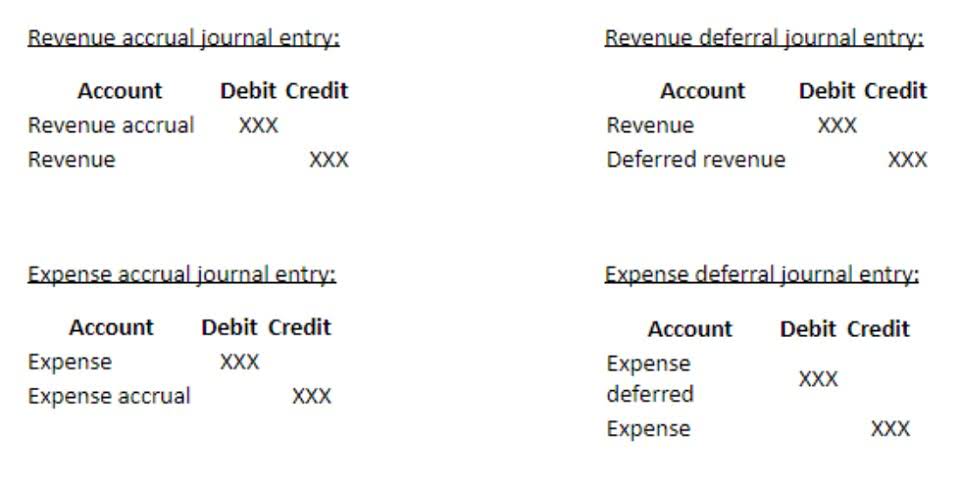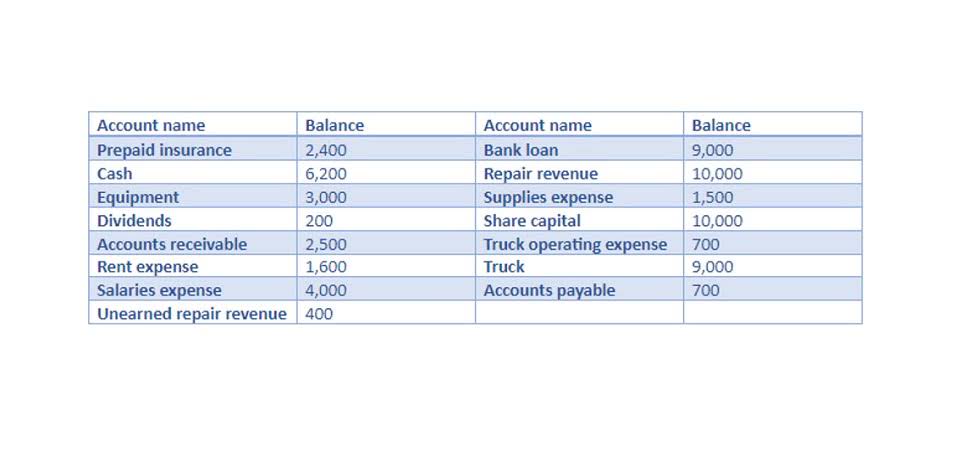Your cart is currently empty!
Category: Bookkeeping
The QBI Deduction: Do You Qualify and Should You Take It?
Such wages, however, will generally be a qualified item of deduction and included in the QBI of the payor. Income earned by a C corporation or by providing services as an employee is not eligible for the deduction regardless of the taxpayer’s taxable income. In some cases, patrons of agricultural or horticultural cooperatives are required to reduce their deduction under section 199A(b)(7) (patron reduction). See also Q&A 17 for more information on computation and available forms and instructions. The qualified business income deduction (QBI) is a tax break that lets business owners with pass-through income write off up to 20% of their taxable income. This ultimately lowers the amount of income tax they owe.
Some QBI items from a pass-through entity, such as section 1231 gain or loss, may need to be identified separately due to the potential of unique treatment on one or more owners’ returns. Items not included in current year taxable income are not included in QBI. Therefore, additional details will also need to be provided for the owners. If for example, in addition to ordinary income the owner is allocated a section 179 deduction, since the 179 deduction may be limited, the detail would be required in order for the owner to properly determine the current year QBI.
Specified Services Trades or Businesses (SSTBs)
You can connect with a licensed CPA or EA who can file your business’s tax return so that you can focus on what matters most. Given their specific tax structures and income flows, pass-through businesses can experience unique benefits from the QBI Deduction. Recognizing and leveraging these advantages is essential for maximizing the impact of this https://www.bookstime.com/articles/what-is-partnership-accounting tax break. Not all businesses are created equal in the eyes of the QBI Deduction. Understanding which type of business qualifies for this tax break is essential for ensuring that you are maximizing the benefits for your particular entrepreneurial endeavor. For many TurboTax customers, the calculation is very simple, while for others…not so much.

This allows the Specified Cooperative partner to include the partnership items when applying the four steps in section 1.199A-8 required to calculate its section 199A(g) deduction (as described in Q&A 50). For example, when applying the four steps, a Specified Cooperative determines the amount of gross receipts from the partnership that are patronage and that qualify as DPGR from the disposition of agricultural or horticultural products. Each partnership needs to provide partners with their share of QBI items, W-2 wages, UBIA of qualified property, whether a trade or business is an SSTB, and other information necessary for partners to compute their QBID.
How to calculate the QBI deduction
The qualified business income deduction is a complex tax break that has the potential to save you a lot of money, but it comes with a lot of rules and restrictions. Any losses from a trade or business that are suspended and not available for use in computing taxable income in the year incurred are not included in QBI for that year. The suspended loss will be treated as a qualified business net loss carryforward from a what is a qualified business income deduction separate trade or business in the year the loss is allowed for purposes of determining taxable income. Section 199A(g) provides a deduction for Specified Cooperatives and their patrons similar to the deduction under former section 199, which was known as the domestic production activities deduction. Section 199A(g) allows a deduction for income attributable to domestic production activities of Specified Cooperatives.
The details of this deduction are in section 199A of the tax code, which is why the deduction is sometimes called a 199A deduction. To qualify for the QBI Deduction, business owners must meet certain criteria, which primarily involve the type of business and the total taxable income. Understanding these qualification benchmarks is crucial for maximizing the benefits of this tax deduction. With the QBI deduction, most self-employed taxpayers and small business owners can exclude up to 20% of their qualified business income from federal income tax (but not self-employment tax) whether they itemize or not. However, there are certain taxpayers who are not eligible to receive the QBI deduction.
How to get the mortgage interest tax deduction
Below are answers to some basic questions about the qualified business income deduction (QBID), also known as the section 199A deduction, that may be available to individuals, including many owners of sole proprietorships, partnerships and S corporations. Some trusts and estates may also be able to take the deduction. The qualified business income deduction is a tax deduction provided to owners of pass-through entities, which include S corporations, limited liability companies, partnerships, and sole proprietorships.
- Well, that’s an interest in real property held for the
production rent and the interest must be held directly or through a disregarded entity by the
individual or entity that’s relying on the safe harbor. - The Form 1040 Instructions and IRS Publication 535 contain worksheets you can use to calculate the deduction.
- The QBI deduction provides a generous tax break for businesses that qualify to claim it.
- The REIT/PTP Component generally includes qualified REIT dividends (including REIT dividends earned through a RIC) and net PTP income as defined in section 199A and the regulations thereunder.
- Well, that’s an interest in real property held for the
What Is Payroll Expense?

The type of industry and number of employees are two factors that will dictate which accounting software is appropriate. For example, a freelancer would not need the what is payroll expense same features in a piece of accounting software as a restaurant owner. The main difference between hiring contractors and employees is to do with tax withholdings.
It’s the first entry you record to show a transaction has occurred. These entries include your employees’ gross earnings and withholdings. In these initial entries, you also record any employment taxes you owe. Gather all necessary tax paperwork and records for accuracy to avoid missing a deduction or credit.
Audit Procedures associated with Auditing Payroll Expenses
You may also have additional fees if you use payroll or accounting software, such as payroll processing fees, payroll tax filing costs, or other add-on services. If an employer is allowed the maximum credit of 5.4%, then the federal unemployment tax rate will be 0.6%. This reduced rate is applied to each employee’s first $7,000 of annual salaries and wages. Voluntary payroll deductions are not required by law, but are based on the fringe benefits your business offers and whether your employees opt into these benefits.
The company’s only expense is the gross amount you pay for services. Having said that, bear in mind that some contractors may request a voluntary withholding of PAYG to be remitted on their behalf to the ATO. Employers don’t match income tax deductions, but they pay federal unemployment taxes.
What Is Payroll Accounting?
The last types of mandatory payroll deductions are court-ordered. Typically, these deductions are withheld for employees who are court-ordered to pay child support or pay back a debt they owe. Considering the two different types of deductions and the specifics involved with each, payroll deductions will vary from employee to employee and business to business. Payroll taxes include all of the taxes on an individual’s salary, wage, bonus, commission, and tips.

That’s a $6,000 increase over last year’s income limit for the service. The payroll costs you pay go toward covering the labor, automation, and distribution of payroll to your employees. Providers also keep records, withhold taxes, distribute funds to retirement accounts, and sometimes pay the appropriate taxes.
What is historical cost?
Even though the plant presented in A’s financial statements is capable of producing economic benefits worth 50% of Company B’s asset, it is carried at a historical cost equivalent of just 25% of its value. The conservatism principle in accounting dictates that estimates, uncertainty, and financial record-keeping should be done in a manner that does not intentionally overstate the financial health of an organization. Historical cost is one way of adhering to the conservatism principle, as companies must report certain assets at cost and have a more difficult time exaggerating the value of the asset. Historical cost is often calculated as the cash or cash equivalent cost at the time of purchase. This includes the purchase price and any additional expenses incurred to get the asset in place and prepared for use.
This impairment cost is not as reliable, nor verifiable, as historical cost because no transaction has taken place. There is an element of estimation or speculation about it until a transaction formally ascertains the asset’s true market value. A historical cost example is a piece of property that was purchased 30 years ago at $100,000 would be reported at that value in the balance sheet under the historical cost principle even if it has appreciated to $500,000 at current market prices.
- Depreciation is when your physical assets decrease in value, whereas amortization is the decrease in value in your firm’s intangible assets.
- Knowing that a company might have bought an office building for $5,000, years ago, does not provide an overview of the current fair value of an asset.
- As the market swings, securities are marked upward or downward to reflect their true value under a given market condition.
- If Company A were to distribute all profits as dividends, it will not have the resources sufficient to replace its existing plant at the end of its useful life.
- It would therefore be acceptable for an entity to revalue freehold properties every three years.
In accounting, the historical cost of an asset refers to its purchase price or its original monetary value. Based on the historical cost principle, the transactions of a business tend to be recorded at their historical costs. The concept is in conjunction with the cost principle, which emphasizes that assets, equity investments, and liabilities should be recorded at their respective acquisition costs. In the preceding example, you would want to use fair market value, rather than the historical cost principle, to record your assets.
If an asset was purchased on the balance sheet date 10 years ago, then it may well be market value, but it is the market value at that point in time. Consequently, the amounts reported for these balance sheet items often differ from their current economic or market values. In accordance with the accounting principle of conservatism, Assets recorded at historical cost must be adjusted to account for the wear and tear through their usage..
This means that the firm will be in operation for the foreseeable future and will not have to dispose of its assets in a liquidation. If a piece of machinery was purchased for $50,000 seven years ago, the historic cost principle requires the asset to be reported at $50,000 on the balance sheet. Depreciation will be accounted for in a separate line item and then the book value of the asset will be reported. Historical cost valuation does not work in a liquidation environment because firms undergoing a forced liquidation often have to sell at fire sale prices irrespective of the fair market value of the asset. The historical cost principle (aka cost concept) was once a pillar of US Generally Accepted Accounting Principles (GAAP).
If an asset was acquired 5 years ago at a cost of $30,000, even if the fair market value of the asset today is $80,000, the asset will be maintained in the books at $30,000. This is because $80,000 is speculative and may change again over time. Under the https://intuit-payroll.org/ principle, gains or losses on an asset are only recognized when the gain or loss is realized. Book value is the original cost minus depreciation and doesn’t necessarily say anything about the price at which the asset could be sold in fair market conditions.
Great! The Financial Professional Will Get Back To You Soon.
For assets, it is the amount of cash, or its equivalent, paid to acquire an asset. For liabilities it is the amount of cash, or its equivalent, received when the obligation was incurred. Under the Historical Cost Convention, assets and liabilities are initially recorded in the accounting system at their original or historical cost and are not adjusted for the subsequent increase in value. Historical cost is the original, or nominal, acquisition cost of your company’s assets.
Revaluation of property, plant and equipment
Second, the historical cost as a measurement basis may not be truly representative of the current correct value of an item. For instance, the value of land purchased five years ago has surely appreciated over time. Such increase in value will never be recognized when the historical concept is used. Under the historical cost concept, the commercial land purchased five years ago at $200,000 will have to be reported in your company’s balance sheet at $200,000. In contrast to historical cost, the current market value of an asset is the price at which it would sell under free market conditions today.
For example, if a company spends $10 million in capital expenditures (CapEx) – i.e. the purchase of property, plant & equipment (PP&E) – the value of the PP&E will be unaffected by changes in the market value. More specifically, the value of a company’s internal intangible assets – regardless of how valuable their intellectual property (IP), copyrights, etc. are – will remain off the balance sheet unless the company is acquired. Historical cost includes the purchase price of an asset, plus any other costs incurred to bring the asset to the location and condition needed to make it function as intended.
When marking an asset to market, a firm will typically try to be accurate and conservative. Marking to market is often the result of a perception that the asset’s value has decreased more than its book value. When this is the case, a firm will often mark the asset to its lowest value. Although it is possible for the fair market valuation to go in the opposite direction, nothing in GAAP forbids it.
Measurement Under Historical Cost Principle
Under the historical cost concept, business transactions are recorded at the original cost at the time of the transaction. The historical cost principle is dependent on the going concern assumption. If a firm is not a going concern and is undergoing a forced liquidation, the value of its assets will be detrimentally affected by the distressed sale situation. Under the historical cost concept, business transactions are recorded in the accounting books at the transaction price, that is, their actual cost at the time the transaction took place. Consequently, income, expenses, assets, liabilities, and equity items are reported in the financial statements at their original cost. The historical cost principle requires that the cost of an asset be reported at its original or historic cost, without adjusting for changes in its market value or changes due to inflation/deflation.
Because the straight-line method is applied, depreciation expense is a consistent $114,000 each year. As a result, the net book value reported on the balance sheet drops during the asset’s useful life from $600,000 to $30,000. At the end of the first year, it is $486,000 ($600,000 cost minus accumulated depreciation $114,000). At the end of the second year, net book value has been reduced to $372,000 ($600,000 cost minus accumulated depreciation of $228,000). Moreover, the depreciation charged in A’s financial statements (i.e. $10,000 p.a.) does not reflect the opportunity cost of the plant’s use (i.e. $20,000 p.a.). As a result, over the course of the asset’s life, an amount of $100,000 would be charged as depreciation in A’s financial statements even though the cost of maintaining the productive capacity of its asset would have notably increased.
It requires the measurement and reporting of the value of an asset based on its original cost. Whatever was formally paid for the asset is its cost and value in the accounting record. All other measures of value include a certain degree of speculation because no transaction has taken place to prove the particular monetary amount being reported.
Trade, sales, or purchase documentation are used to determine the historical cost of an asset. However, it is important to know that the historical cost may not necessarily be a true reflection of the fair value of an asset. A certain item for sale will be reported as part of your inventory at its actual historical cost of $100, even though its replacement cost has actually increased to $120. You do not change the amount recorded if the market causes the equipment’s value to change. This approach may seem simplistic, especially in today’s rapidly changing economic environment.
GAAP requires that certain assets be accounted for using the acquisitions and payments cycle method. Inventory is also usually recorded at historical cost, though inventory may be recorded at the lower of cost or market. A historical cost is a measure of value used in accounting in which the value of an asset on the balance sheet is recorded at its original cost when acquired by the company. The historical cost method is used for fixed assets in the United States under generally accepted accounting principles (GAAP). And one other way to record your assets is the fair market value (FMV).
The cost includes expenses connected with the purchase, like sales tax, setup, delivery, installation, and testing. Using the historical cost principle is not only good accounting, but is a standard for public companies (those selling their stock on public stock exchanges). In the U.S., the Financial Accounting Standards Board (FASB) has set standards, called Generally Accepted Accounting Procedures (GAAP), requiring the use of the historical cost principle. The International Financial Reporting Standards Board (IFRS) sets similar standards for international companies. The historical cost principle (also called the cost principle) states that virtually all business assets must be recorded as the value on the date the asset was bought or assumed ownership.
Outsourced Law Firm Accounting & Bookkeeping Services LWI
Content
Many accountants and attorneys who go into private practice struggle until they build a client base, but they can be earning a six-figure salary within the first year. The career is often stigmatized as being boring and is a haven for math wonks and number crunchers, but many accounting duties require strong people skills and diplomacy. Public accountants spend the majority of Navigating Law Firm Bookkeeping: Exploring Industry-Specific Insights their workweeks at various third-party client offices. These professionals must be capable of assimilating into diverse corporate cultures. Your firm needs to keep track of your invoices so you know what money is owed (and who you owe money to) to avoid this problem. When you don’t collect funds that you’re owed, you miss out on revenue and are essentially working for free.
With our dedicated and experienced bookkeepers, you potentially transform the financial management of your law firm. As an attorney, you may be aware of state bar requirements for trust accounts, but that doesn’t prevent you make mistakes. The most common mistakes are putting funds in the wrong account, accidentally or intentionally withdrawing funds, fail to report monthly, and so on. Poor management of trust accounts can lead to penalties, suspension, or even losing the right to practice law.
Why bookkeeping and accounting matter for law firms
It is important for the law firms to have a proper accountability of the finances of the organization. The working pattern of law firms is a little different, so the law firm bookkeeping https://investrecords.com/the-importance-of-accurate-bookkeeping-for-law-firms-a-comprehensive-guide/ needs to be done with a different pattern. Accounts Junction is reliable, accurate and efficient accounting firm providing cost effective accounting services for law firms.
- If you put your firm’s bookkeeping and accounting on the back burner, you will have issues with cash flow, getting paid, and more.
- Law schools offer little to no training on how to manage these accounts.
- While new business owners may want to run their firm in a relaxed way and not set any budget, we don’t advise it.
- Analyze the finance productivity of your timekeepers or responsible lawyers and legal professionals in a variety of ways based on billing or collection data.
- That’s also why we recommend eventually hiring a professional bookkeeper to ensure nothing falls through the cracks.
Yes, most versions of QuickBooks Online let you create unique user IDs and customize access levels for anyone on your team so they can work in your legal accounting software with their own login. Bringing in an expert will help you with accounting tasks, accounting processes, business decisions, bookkeeping tasks, and more. Do not be afraid to bring in an expert to allow you to focus on things you are better at, like solutions for your clients’ legal problems. Excellent law firm accounting is to give data that is valuable on the state of your company.
Accountant or CPA
And we know what it’s like to face strict regulatory standards, and carry the fiduciary responsibility when managing Trust/IOLTA accounts. Our law firm accounting services are designed to automate all of your internal processes- ultimately saving you time and money. Lawyers often make common mistakes when bookkeeping for their law firms.
Daily bookkeeping gives you better information about the financial state of your law firm, while monthly bookkeeping will keep you guessing. View your financial data, banking transactions, and case information side-by-side, and gain a clear understanding of your firm’s overall health and outlook. Below are a few ways to improve your finances and simplify your law firm tax accounting efforts. Law firm accounting can be a lengthy process, widely despised by attorneys and other legal professionals who’d instead be practicing law than crunching numbers. When you purchase a CosmoLex subscription, you access our free, in-house support. We’re available every step of the way to help law firms make the most of our supportive features.
Commingle operating and Client Trust Account funds
We understand what it’s like to have everything fall on your shoulders. That’s also why we recommend eventually hiring a professional bookkeeper to ensure nothing falls through the cracks. By now, you know you can’t simply create a financial strategy and budget and sit back and relax.
IOLTA (Integrated Online Taxation and Accounting) is a software platform that helps law firms manage their finances and keep records of their transactions. IOLTA can be used to track billable hours, expenses, client payments, and trust accounting. A bookkeeper can be hired to help with accounting tasks, such as billing clients and monitoring expenses.
It involves a ton of inefficient, manual work—involving a lot of spreadsheets, paper invoices, inputting data entry, and struggles with collections. Beyond just staying organized and compliant, following best practices for accounting for law firms will help you identify growth opportunities. Bookkeepers record the financial transactions and balance the financial accounts for your firm. Legal bookkeeping takes place before any accounting can occur and is an important administrative task for any law firm. Let Pearl Lemon Accountants’ bookkeeping services make it a lot easier.
- With debit card and ACH payments, funds are withdrawn immediately from the client’s bank account, but these methods still provide the added convenience of immediate online payments.
- Once you grasp these basic methods, we recommend bringing in an expert bookkeeper to help you keep the most accurate books.
- The interest rates are high, limits are often lower than other forms of credit, and they’re easily mismanaged.
- For example, if you’re expensing a meal, you might record who you were with and what you discussed.
- As a result, you’re left with multiple platforms and an accounting system that is not tailored specifically for law firms.
- It’s similar to two-way reconciliation, where you compare your bank account balance to your company’s books to make sure it matches.
- While on-premise accounting software ties you to a physical location and requires high maintenance costs and time-consuming updates, cloud-based accounting software is accessible anywhere.
What is the difference between liability and debt?
For example, if a company rarely uses short-term loans, it may group those with other current debts under an “other” category. This helps them to calculate the leveraging position of the company, which helps them to make some major decisions regarding the company. However, they are looked at individually, as well as from an aggregated perspective.
- Personal Finance is about constructing a budget which fits with one’s income and expenditure.
- In this case, it is a matter of confronting the two main groups into which the Liabilities of the Accounting Balance are divided.
- To make informed decisions, it’s important to understand the value of different types of assets.
- Understanding the difference between assets and liabilities is essential for making sound financial decisions.
- It is mostly long-term in nature, but this amount is representative of something that is owned by the company.
Generally, liability refers to the state of being responsible for something, and this term can refer to any money or service owed to another party. Tax liability, for example, can refer to the property taxes that a homeowner owes to the municipal government or the income tax he owes to the federal government. When a retailer collects sales tax from a customer, they have a sales tax liability on their books until they remit those funds to the county/city/state. A liability is something a person or company owes, usually a sum of money. Liabilities are settled over time through the transfer of economic benefits including money, goods, or services. Others use the word debt to mean only the formal, written financing agreements such as short-term loans payable, long-term loans payable, and bonds payable.
What is Accounts Receivable Collection Period? (Definition, Formula, and Example)
Most SMEs are financed with commercial credit, that is, they seek to pay suppliers as late as possible and speed up the collection of their own invoices. AT&T clearly defines its bank debt that is maturing in less than one year under current liabilities. For a company this size, this is often used as operating capital for day-to-day operations rather than funding larger items, which would be better suited using long-term debt. However, its total debt would be $100,000, which is just the bank loan.

Options transactions are often complex and may involve the potential of losing the entire investment in a relatively short period of time. Certain complex options strategies carry additional risk, including the potential for losses that may exceed the original investment amount. For instance, a company may take out debt (a liability) in order to expand and grow its business.
Non-Current (Long-Term) Liabilities
Assets include inventory, machinery, savings account balances, and intellectual property. For example, buying new equipment may mean taking out a loan to finance the purchase. Contingent liabilities are a special type of debt or obligation that may or may not happen in the future. The most common example of a contingent liability is legal costs related to the outcome of a lawsuit. For example, if the company wins the case and doesn’t need to pay any money, it does not need to cover the debt. However, if the company loses the lawsuit and needs to pay the other party, the company does need to cover the obligation.
Here’s Why Gibson Energy (TSE:GEI) Can Manage Its Debt Responsibly – Simply Wall St
Here’s Why Gibson Energy (TSE:GEI) Can Manage Its Debt Responsibly.
Posted: Mon, 04 Sep 2023 10:49:56 GMT [source]
By understanding the differences between assets and liabilities, financial decisions can be taken with more certainty. These suggestions will help individuals and businesses manage their finances better by concentrating on asset build-up while cutting down liabilities. In addition to the accounting equation, which states that your assets should equal your liabilities and equity, there are other equations in which you might use liabilities. Though they might sound similar, business liabilities and business expenses are not the same things. The liabilities are what the company owes, while the expenses are what the company spends.
What are the Benefits of Factoring Your Account Receivable?
In any case, it is convenient to review the accounts and reduce the indebtedness or total liabilities as much as possible. A very high ratio generates a lot of dependencies and drives away new investors because in the event of insolvency it will be more difficult to recover the money. Many times, having to go into debt is a consequence of a moment of lack of cash.
It is an indicator of the company’s ability to repay long-term debt, and it is both an indicator of indebtedness and profitability. As in the previous cases, there are large differences between sectors depending on whether they are more or less dependent on the acquisition of fixed assets. However, the idea is that this ratio does not fall below 15% -20%, since it would mean that the company needs more than 6.5 years of generation of cash to fully repay your long-term debts. There are hundreds of debt indicators, but we present the ones that are fundamental. It is important to differentiate the time horizon of the obligations.
Liabilities Examples
If you want to know more about how you can manage your debt wisely, then go over to the Goalry platform where you will be able to enter the Debtry store to gain insights on this topic. Considering the name, it’s quite obvious that any liability that is not near-term falls under non-current liabilities, expected to be paid in 12 months or more. Referring again to the AT&T example, there are more items than your garden variety company that may list one or two items.
Is Norwegian Cruise Line Holdings (NYSE:NCLH) A Risky Investment? – Simply Wall St
Is Norwegian Cruise Line Holdings (NYSE:NCLH) A Risky Investment?.
Posted: Sun, 03 Sep 2023 15:02:30 GMT [source]
When you have a lot of liabilities, they can stand in the way of you investing in assets or saving money for retirement or other financial goals. If you have a 401(k), for instance, you’re meant to leave the money in the account until you reach retirement age. Once you turn 59 ½, you can start withdrawing from the 401(k) and converting the funds into cash. Since the money in your 401(k) is meant to be for retirement, accessing before you’re the appropriate age comes with negative financial consequences. If you need to take money out of a 401(k) or another retirement account early, you’ll need to pay a 10% early withdrawal penalty, plus pay income tax on the distribution in most cases.
Therefore, it can be seen that total debt is considered to be a subcategory of total liabilities. Therefore, it can be seen that both debt and total liabilities of the company are similar in nature. They have the same accounting treatment and are represented in the same manner on how a general ledger works with double-entry accounting along with examples the Balance Sheet. However, total debt is considered to be a part of total liabilities. Some of the major examples of liabilities include payments that need to be made to the suppliers, accrued utility bills, as well as long-term contractual loans that the company has taken on.

For example, a 30-year mortgage wouldn’t be a current liability, but the monthly payments for the upcoming year would be. To diagnose the financial health of a company, one of the basic tests is to analyze its debt ratio. It is a measure that assesses the degree of financial risk based on the volume of external resources used. External financing is recorded in the form of obligations and total debt.
limited liability company How to account for startup costs for an LLC from personal money? Personal Finance & Money Stack Exchange
Just to be cautious however, I would keep a copy of this year’s schedule in your return just in case the transfer did not take place. Get unlimited tax advice right on your screen from live experts as you do your taxes. It’s tough to figure out how much money to set aside as a 1099 contractor, especially with quarterly https://business-accounting.net/ payments in play. These apps typically allow on-the-go expense management, allowing you to take a picture of a receipt and upload the image to your software, where it will be stored and later attached to the appropriate expense. If it’s a reimbursable expense, the receipt can be used for creating an expense report.
“Investing in your financial education can pay off significantly for your business,” Leclerc says. They’re a way of seeing into the future to predict your cash flow ebbs and flows. The idea is to try to anticipate cash flow squeezes and plan ahead to avoid them. A cash flow projection can help you time your spending decisions, arrange working capital financing to tide you over any upcoming rough patches and give you peace of mind. To calculate your gross profit, you add up all your income and then subtract your direct costs (known as “cost of goods sold” for manufacturers, or “cost of sales” for retailers and wholesalers). Direct costs are those connected directly to making a product or offering a service, such as labour and raw materials.
In the operation of a business, you will probably make certain payments you must report on information returns (discussed later under Information Returns ). The forms used to report these payments must include the payee’s identification number. Making this election will allow you to avoid the complexity of Form 1065 but still give each spouse credit for social security earnings on which retirement benefits are based.
- A taxpayer claims the amortization deduction on Form 4562, Depreciation and Amortization, and then carries the total deductions to the appropriate return.
- The tax applies to vehicles having a taxable gross weight of 55,000 pounds or more.
- A good recordkeeping system includes a summary of your business transactions.
- Business property you must depreciate includes the following items.
- You generally have to make estimated tax payments for your corporation if you expect it to owe tax of $500 or more when you file its return.
- Yet, tracking your business is essential as it helps you see exactly how it is doing.
Startup activities are those actions required to organize a new business or introduce a new product. Essentially, the accounting for startup activities is to expense them as incurred. While the guidance is simple enough, the key issue is not to assume that other costs similar to start-up costs should be treated in the same way.
But with messy or incomplete financials, you can miss these tax saving expenses and end up with a bigger bill than necessary. You’ll depreciate or amortize capitalized expenses once you place the property in service or use it to generate income. Amortization and depreciation end once the asset reaches the end of its useful life. Accounting for GAAP startup costs probably sounds a little intimidating.
You can elect to deduct up to $5,000 of business startup costs and $5,000 of organizational costs in the first year you are in business. Each $5,000 deduction is reduced dollar-for-dollar by the amount that your total startup or organizational costs are greater than $50,000. So, for example, if you incurred $53,000 of startup or organizational costs in the first year, you could only deduct $2,000 in the first year ($5,000 – $3,000). This is especially important at tax time, since you’ll want to be sure to take all of the expense deductions that you can.
Costs You Can’t Deduct for Business Startups
Henry figures the depreciation using the modified accelerated cost recovery system (MACRS). He purchased and placed in service several how to record start-up expenses used assets that do not qualify for the section 179 deduction. Depreciation and the section 179 deduction are discussed in Pub.
To simplify tracking your business expenses, link your accounting software to your banks. It will enable automatic download of all bank transactions and even categorize your expenses. You can also integrate other functions, including importing your daily transactions and downloading bank statements making it easy to reconcile statements. Accounting for startup costs involves the identification, recognition, measurement, and disclosure of the expenses a company incurs during the initial stages of its operations. Startup costs can include expenses such as legal fees, registration fees, pre-opening advertising, employee training, rent deposits, and other costs incurred before the company starts generating revenue. These cases generally hold that a taxpayer is engaged in a trade or business only when the business begins to function as a going concern and performs those activities for which it is organized.
How much can I deduct?
These costs may be deductible as other types of expenses. The costs of buying tangible business assets for your startup, like vehicles or equipment, must be depreciated over the life of the asset. An LLC is a pass-through entity in the USA, so profits and losses flow through to the individual’s taxes. Thus an LLC has a separate TIN but the pass-through property greatly simplifies tax filings, as compared to the complicated filings required by C-corps. When you (the owner) make contributions, it is considered to be the cash of the business.
How to list startup costs for a business
Generally, an EFT is made using the Electronic Federal Tax Payment System (EFTPS). If you don’t want to use EFTPS, you can arrange for your tax professional, financial institution, payroll service, or other trusted third party to make electronic deposits on your behalf. You generally have to make estimated tax payments if you expect to owe tax of $1,000 or more when you file your return. Use Form 1040-ES, Estimated Tax for Individuals, to figure and pay your estimated tax. Generally, you must pay taxes on income, including self-employment tax (discussed next), by making regular payments of estimated tax during the year.
The taxpayer amortizes any startup costs over the deduction limit for 180 months beginning in the month the active conduct of the business to which the costs relate begins (Sec. 195(b)(1)(B)). This will help the taxpayer avoid having to amortize costs rather than taking a current deduction. For financial accounting purposes, these costs are generally included in the category of startup costs and are all treated the same way. However, for tax purposes, costs that are financial accounting startup costs may be required to be further subdivided into smaller more specific categories, each of which is treated differently. This article discusses how these costs incurred by a business before it begins its active operations are treated for financial accounting and tax purposes.
For an explanation of “material participation,” see the instructions for Schedule C, line G. To take the write-off for amortization for each year, use IRS Form 4562 and include it in your business tax return. The election to deduct is included on your business tax return as part of “Other Income.”
You can write off any expenses you had for creating or buying an active trade or business or for investigating a business opportunity. Small business startup costs can sometimes overlap with fixed assets and inventory costs. Use an accountant to help you properly organize your books.
What is the Difference Between an Unadjusted Trial Balance and an Adjusted Trial Balance?
Scan and review the trial balance for reasonableness to detect errors. During the accounting close process, check that the trial balance line items are included in the general ledger. Transactions recorded in the wrong accounting period can lead to timing differences. Adjusting entries are necessary to correct for accruals or deferrals that may not be reflected accurately in the Unadjusted Trial Balance.
A contra account is an account paired with another account type, has an opposite normal balance to the paired account, and reduces the balance in the paired account at the end of a period. Your balance sheet is made up of equity accounts, assets and liabilities. These summarized entries are then used to create the balance sheet, income statement, and statement of changes in equity. The first https://intuit-payroll.org/ step in creating the adjusted trial balance is to record all transactions in a daybook or the book of general entries. Adjusting entries are all about making sure that your financial statements only contain information that is relevant to the particular period of time you’re interested in. If you’re using a dedicated bookkeeping system, all of this work is being done for you in the backend.
- The accuracy of the balances is then critically reviewed, necessitating a meticulous examination of general ledger entries to detect and rectify any errors.
- Interest can be earned from bank account holdings, notes receivable, and some accounts receivables (depending on the contract).
- Income statement accounts include Revenues, Cost of Goods Sold and Cost of Services, Expenses, gains, and losses.
- Service Revenue had a $9,500 credit balance in the trial balance column, and a $600 credit balance in the Adjustments column.
When deferred expenses and revenues have yet to be recognized, their information is stored on the balance sheet. As soon as the expense is incurred and the revenue is earned, the information is transferred from the balance sheet to the income statement. Two main types of deferrals are prepaid expenses and unearned revenues. Unadjusted trial balances only serve to review accounts and determine required adjustments.
These adjustments transform the Unadjusted Trial Balance into the Adjusted Trial Balance, ensuring that financial statements reflect the economic reality of the company’s operations and financial position. In both examples, adjusting entries is essential for providing stakeholders with reliable information for decision-making and financial analysis. Accruals involve recognizing revenues or expenses that have been earned or incurred but haven’t been recorded in the general ledger. For example, if a company provides services in December but hasn’t received payment by year-end, an adjusting entry is made to recognize the revenue in December. Whereas, the adjusted trial balance (ATB) is the same as UTB except that it also includes any adjusting entries made during an accounting period. When you prepare a balance sheet, you must first have the most updated retained earnings balance.
Step 2:
Learn more about what a trial balance is, which error types a trial balance may not help you find, and the types of trial balance reports to use before closing the books each month to prepare financial statements. For XYZ Consultants, the adjusting entry would recognize the additional $5,000 in consulting revenue, providing a more accurate picture of the total revenue for the quarter. In the case of ABC Manufacturing, adjusting entries for depreciation would reduce the Equipment account, aligning the Unadjusted Trial Balance with the actual decrease in the value of the equipment. Adjusting entries are made to recognize revenues that were initially recorded as unearned. For instance, if a company receives payment for goods or services that have not yet been delivered, an adjusting entry is made to recognize the revenue when it is earned. It will include both debit and credit balances, but no adjusting entries have been made yet.
Unadjusted vs Adjusted Trial Balance
Accountants use trial balance reports and worksheets for a reporting period to determine whether the general ledger account debits and credits are in balance. Although using a trial balance can help detect accounting errors, some financial statement errors or omissions may not be prevented simply by using a trial balance. The format of the Unadjusted Trial Balance often employs a two-column layout, with the left column representing the debit balances and the right column representing the credit balances.
Trial Balance in Accounting: Definition, Types, & Examples
After the accounts are analyzed, the trial balance can be posted to the accounting worksheet and adjusting journal entries can be prepared. As with all financial reports, trial balances are always prepared with a heading. Typically, the heading consists of three lines containing the company name, name of the trial balance, and date of the reporting period. In Completing the Accounting Cycle, we continue our discussion of the accounting cycle, completing the last steps of journalizing and posting closing entries and preparing a post-closing trial balance. You may notice that dividends are included in our 10-column worksheet balance sheet columns even though this account is not included on a balance sheet. There is actually a very good reason we put dividends in the balance sheet columns.
The Adjusted Trial Balance serves as a foundation for generating reliable financial statements that stakeholders, including management, investors, and creditors, rely on for decision-making and performance evaluation. In summary, while the Unadjusted Trial Balance provides an initial overview, the Adjusted Trial Balance refines and enhances the accuracy of financial reporting through necessary adjustments. Deferrals involve recognizing revenues or expenses that have been recorded in advance but haven’t been earned or incurred by the end of the accounting period. For instance, if a company receives payment for services in advance but has not yet provided the services, an adjusting entry is made to defer the revenue until the services are delivered. The Unadjusted Trial Balance typically follows a specific order and format when presenting accounts.
Great! The Financial Professional Will Get Back To You Soon.
Ending retained earnings information is taken from the statement
of retained earnings, and asset, liability, and common stock
information is taken from the adjusted trial balance as
follows. He does the accounting himself and uses an accrual basis for accounting. At the end of his first month, he reviews his records and realizes there are a few inaccuracies on this unadjusted trial balance. Once you make the adjustments to your GL, you create an adjusted trial balance. From there, you prepare a post-closing trial balance, with the entries netting to zero. These have credit balances and may include service revenue and sales revenue.Transferring information from T-accounts to the trial balance requires consideration of the final balance in each account. If the final balance in the ledger account (T-account) is a debit balance, you will record the total in the left column of the trial balance. If the final balance in the ledger account (T-account) is a credit balance, you will record the total in the right column. After Paul’s Guitar Shop, Inc. records its journal entries and posts them to ledger accounts, it prepares this payroll expert support.
The accounts of a Balance Sheet using IFRS might appear as shown here. Ending retained earnings information is taken from the statement of retained earnings, and asset, liability, and common stock information is taken from the adjusted trial balance as follows. When you prepare a balance sheet, you must first have the most
updated retained earnings balance. To get that balance, you take
the beginning retained earnings balance + net income – dividends.Situations such as these are why businesses need to make adjusting entries. To complete an unadjusted trial balance, put the balances in the debit column. In the appropriate column, put every respective total on the last line. After this, you include liabilities (eg. accounts payable) and stockholders’ equity accounts (eg. common stock). Both the adjusted and the unadjusted trial balance needs to have the total amount of credit balances equal to the total amount of debit balances.
Example of a Trial Balance
An unadjusted trial balance serves the purpose of creating ending balances in each account a business operates including cash, receivables, payables, inventory, and so on. According to the rules of double-entry accounting, a company’s total debit balance must equal its total credit balance. Each step in the accounting cycle takes up precious time that can be better spent focusing on your business.
Unadjusted trial balance is an important step towards preparing a complete set of financial statements. ¹ You will get an overview of all the accounts that are used in your business for example, sales account, purchase account, inventory account etc. in a summary form with the help of an unadjusted trial balance. In an alternative format, the unadjusted trial balance may have a separate column for all debit balances and a separate column for all credit balances. This is useful for ensuring that the total of all debits equals the total of all credits.
How To Find A Small Business Accountant 2024 Guide
Small business accounting mirrors this definition, but usually pays special attention to even the smallest details, since for most small businesses, every dollar counts and needs to be noted. Tracking the money that flows in and out of your small business is an essential piece to ensuring that you not only stay afloat, but also continue to grow successfully. If you’ve ever experienced tax filing mistakes or fines, you probably have some estimate of how much these can cost.
- No matter which you opt for, you’ll want to select someone who has plenty of experience with the type of small business you have and who you feel comfortable sharing sensitive information with.
- Clients with larger, more complex operations might require more specialized services, such as financial reporting or tax compliance, leading to higher fees.
- For example, suppose you’re already tracking transactions with accounting software and need help with tax preparation.
- You’ll need to consider factors directly affecting your business and the accountant’s services.
- The most obvious difference will be the location, the experience of the individual you hire, and the type of accounting work you are looking to have completed.
If hiring an account is beyond your budget, consider using an accounting software instead. For more information, check out the best online bookkeeping services for small businesses. An accountant’s charges can be per hour, or a service rate dependent on a business’s needs.
Can I prepare my company’s taxes myself?
Next, you’ll have to pick if you want to work with an independent accountant or an accounting firm. No matter which you opt for, you’ll want to select someone who has plenty of experience with the type of small business you have and who you feel comfortable sharing sensitive information with. Instead of paying your taxes at the end of the year, you’ll need to set up quarterly estimated tax payments.
However, if you’d like an expert to review your numbers, an accountant can help. While there are some basic financial tasks you can handle yourself, there are others that it’s best to leave to a professional. Using our proprietary cost database, in-depth research, and collaboration with industry experts, we deliver accurate, up-to-date pricing and insights you can trust, every time. Asking the right questions can help you select the best professional for your accounting needs.
If your tax situation is simple, say you work for a company and need to submit your W2s, it may cost less to hire an accountant. Calculate how much an accountant will cost your business compared to using accounting software. Accounting software can help you automate your accounting services, track transactions as they happen, and even prepare tax documents and reports. You can create different scenarios, such as hiring someone to manage accounting software or hiring an accountant for special projects. As we mentioned, accountant fees vary depending on many factors, but the median accountant’s hourly cost, according to the Bureau of Labor Statistics, is $37 per hour. This number can help you estimate how much you will spend on accounting services depending on the services you need.
What do accountants do?
So individuals whose returns require Schedules A, C, D, and E paid an average total fee of $778. You’ll need to pay higher rates for these accreditations since they portray credibility. Also, someone with a significant clientele is expected to have more experience, which https://accountingcoaching.online/ will help your financial growth, so you should pay them more than a recent graduate. Their proficiency in managing these elements ensures that the risks of financial mismanagement are minimized, resulting in a stable and secure financial infrastructure for the business.
Besides his extensive derivative trading expertise, Adam is an expert in economics and behavioral finance. Adam received his master’s in economics from The New School for Social Research and his Ph.D. from the University of Wisconsin-Madison in sociology. He is a CFA charterholder as well as holding FINRA Series 7, 55 & 63 licenses.
Choose an accountant who answers your questions clearly and in a timely manner. Reasonable efforts have been made by AdvisoryHQ to present accurate information, however all info is presented without warranty. Our goal is to address all of these concerns and more so you can accurately assess the cost of an accountant, whether you work in the industry or need to hire your own accountant.
Using tax accounting software can be like having a virtual accountant there to guide you through the process. It is essential to remember that these are the average fees; the cost will differ if parts of your tax filings are under exceptional cases and take longer for the accountant to complete. In these circumstances, accountants may charge you more consultation fees and overtime work.
Often, the project rate will be the accountant’s hourly rate multiplied by the number of hours they believe it will take to complete the project. Purchasing tax accounting software can be a less expensive option; journal entry for depreciation it can be free (for simple returns), and for more complex filing options, it will generally cost less than $120. Both TurboTax and H&R Block offer reasonably priced options for tax accounting software.
How should an individual expect to be charged for professional accounting services?
When budgeting for accounting services, it’s essential to consider what exactly you need from an accountant. Common accounting services include tax preparation, bookkeeping, payroll, and financial planning. These services may have different pricing models, such as hourly rates, fixed fees, or a combination of both.
However, highly experienced or specialized professionals may charge higher rates. Accountants hired to do regular or routine items, including bookkeeping or payroll, may find it simpler to incorporate a fixed-fee structure into their accountant cost. A fixed-fee structure gives you slightly more accuracy when determining how much to set aside in your budget for regular accounting costs. The use of fixed-fee structure is increasing, according to the same survey from Intuit. As in all things, there is more than one way to determine an accounting cost. In AdvisoryHQ’s detailed review, we will be taking a look at the average accountant fees.
What is the average cost for an accountant?
Using a professional accountant can help you run your business smoothly and avoid big financial problems in the future. Outsourcing your accounting may seem unnecessary or expensive at first, but by doing so, you’re likely to save money in the long run. Check a preparer’s credentials, including whether they have a valid PTIN for this filing season, through the IRS Directory of Federal Tax Return Preparers. Those in the Southeastern U.S. pay the lowest costs, while those in New England, the Mid-Atlantic, and the West Coast pay the highest.
Comprehensive Income: Statement, Purpose, and Definition
Content

A third proposition is for the OCI to adopt a broad approach, by also including transitory gains and losses. The Board would decide in each IFRS standard whether a transitory remeasurement should be subsequently recycled. This article looks at what differentiates profit or loss from other comprehensive income and where items should be presented. PwC refers to the US member firm or one of its subsidiaries or affiliates, and may sometimes refer to the PwC network. This content is for general information purposes only, and should not be used as a substitute for consultation with professional advisors.
So rather than have a clear principles based approach on reclassification what we currently have is a rules based approach to this issue. Like US GAAP, the income statement captures most, but not all, revenues, income and expenses. Other items of comprehensive income (OCI) do not flow through profit and loss. Examples include the fair value remeasurement of certain equity instruments, remeasurements of defined benefit plans, and the effective portion of cash flow hedges change in fair value. Comprehensive income is often listed on the financial statements to include all other revenues, expenses, gains, and losses that affected stockholder’s equity account during a period.
Importance of Other Comprehensive Income
IFRS do not prescribe the exact format of the Statement of comprehensive income but it can be obtained from IFRS Taxonomy. Just that official format is built into the ReadyRatios analytical software. At the end of the statement is the comprehensive income total, which is the sum of net income and other comprehensive income. Comprehensive income is statement of comprehensive income the sum of a company’s net income and other comprehensive income. On 26 June 2023 the ISSB issued its inaugural standards—IFRS S1 and IFRS S2—ushering in a new era of sustainability-related disclosures in capital markets worldwide. That means all kinds of revenues are recorded in the revenue sections no matter those revenues are realized or not.

An entity may refer to the combined statement as the Statement of comprehensive income. An entity has to show separately in OCI, those items which would be reclassified subsequently (‘recycled’) to profit or loss and those items which would never be reclassified subsequently (‘recycled’) to profit or loss. The statement of comprehensive income gives company management and investors a fuller, more accurate idea of income. Comprehensive income is the variation in the value of a company’s net assets from non-owner sources during a specific period.
Related Readings
As you can see, the net income is carried down and adjusted for the events that haven’t occurred yet. This gives investors and creditors a good idea of what the company’s assets and net assets are truly worth. Keep in mind, that we are not only adjusting the assets of the company, available for sale securities, we are also adjusting the net assets of the company, stockholder’s https://www.bookstime.com/articles/what-are-depreciable-assets equity. A standard CI statement is usually attached to the bottom of the income statement and includes a separate heading. To compensate for this, the Financial Accounting Standards Board (FASB) requires companies to use universal measurements to help provide investors and analysts with clear, easily accessible information on a company’s financial standing.
Another suggestion is that the OCI should be restricted, should adopt a narrow approach. On this basis only bridging and mismatch gains and losses should be included in OCI and be reclassified from equity to SOPL. Statement of Comprehensive Income records both operating profit and loss and other comprehensive income which is not from normal operating activities. Creditors can see how much skin investors have in the company and investors can see the potential of the company assets and future earnings and profits if these assets were actually sold and the gains were realized. Items recorded on the balance sheet at historical cost rarely reflect the actual value of the assets. Since the company hasn’t sold these items and earned additional revenue from them, we can’t record additional income on the balance sheet and must keep the value listed at the purchase price.
How to Do Payroll Accounting: A Step-by-Step Guide for Employers
Contents:


Going propeller industries-first does not mean you have to shut down your office, but it does mean you have to think about the experience of your remote workers more deliberately. Our guide to creating a more inclusive workplace for remote workers has more information. Determine whether you have entities in the countries where your workers live. If you do not have a local legal entity in every country where you want to hire, you will need to work with an employer of record. Decide whether to pay workers as employees or contractors. Contractors are simpler to onboard, but employees have several advantages in the long run.
If so, an employer is expected to calculate this figure based on records of past tips or using a good-faith estimate. Payroll tax – Similarly, an employer may also be expected to contribute to federal and state unemployment taxes. To learn more on the accounting for post-retirement benefits, such as health insurance coverage, you are referred to an Intermediate Accounting text and/or to the Financial Accounting Standards Board’s website To illustrate, assume that an employee works full-time for the entire year 2022 and as a result earns one week of vacation to be taken anytime during the year 2023. In the weeks/months of the year 2022 , the employer debits Vacation Expense and credits Vacation Liability. In 2023, when the employee takes the vacation earned in the previous year, the employer records the gross amount of the vacation check with a debit to Vacation Liability .
Part of the payroll process is gathering taxes relating to employee wages and benefits and your contribution to them. Then, you will need to hold onto those funds until your deposit date. You do not immediately deposit these with the taxing authority but do so on a date and schedule specified by the local authority).
Journal Entry to Record Paying Expense Being Held as Liability
We provide third-party links as a convenience and for inhttps://1investing.in/ational purposes only. Intuit does not endorse or approve these products and services, or the opinions of these corporations or organizations or individuals. Intuit accepts no responsibility for the accuracy, legality, or content on these sites. Sign up to receive more well-researched small business articles and topics in your inbox, personalized for you. He has over 15 years of experience writing for small and growing businesses.
- After the holiday season, companies then may cut back on the number of workers when business is not as busy and the need for additional workers has gone.
- Variable portion of salaries, calculated as described below in the definition of Fixed and Variable Payroll Expenses.
- It also includes the employer’s employee benefits package costs.
Every business should use the accrual method of accounting, which matches the revenue it earns with the expenses it incurs. The accrual method records payroll expenses in the month that you incur them, regardless of when you pay for the expenses. The matching concept presents a more accurate picture of company profit. This accounting method does not post expenses based on cash outflows.
Methods for Lowering Payroll Costs
Manual payroll is best for businesses that have a few employees and simple, straightforward payroll needs. It’s generally not the best long-term solution for businesses that intend to grow and hire more employees. Payroll generally refers to the process of paying employees, although the term is also sometimes used to mean the company’s list of employees or the total cost of staff wages. For more information on the Remote API, which allows HR and payroll companies to connect Remote’s global employment solutions directly to other platforms, visit our Remote API headquarters.
This Tool Can Seriously Help You Grow Your Small Business – Digital Trends
This Tool Can Seriously Help You Grow Your Small Business.
Posted: Mon, 10 Apr 2023 19:56:43 GMT [source]
If an employer is allowed the maximum credit of 5.4%, then the federal unemployment tax rate will be 0.6%. This reduced rate is applied to each employee’s first $7,000 of annual salaries and wages. Payroll expenses that have been incurred but not yet paid are called accrued payroll expenses, and are reported as a liability.
Which deductions are required by law?
Businesses that manage to optimize their operations and cut back on overtime can decrease their payroll costs significantly. Payroll data can help organizations get insights into which departments or regional teams frequently work overtime and take action—for instance by hiring a new full-time employee to pick up the additional workload. Payroll is the compensation a business must pay to its employees for a set period or on a given date. Wage expenses are sometimes reported by department and they are most likely to be reported separately for the production department. This department is often the one with the most hourly employees.

In addition to income taxes, FICA requires a deduction from employees’ pay for federal social security and Medicare benefits programs. FICA taxes are withheld by the employer and are deposited along with federal income taxes in a financial institution. Business also accrue payroll expenses in the form of employee benefits.
They shall indicate the method of calculation used to determine this salary and the amount of the accounting profit before deduction of the sole proprietor salary. Get up and running with free payroll setup, and enjoy free expert support. Try our payroll software in a free, no-obligation 30-day trial. Here you read what accrued payroll is, how it is calculated and why every business should keep an eye on its payroll accrual.
For example, statistics show that a production worker in a meat packing plant has a greater-than-average chance of suffering job-related cuts or back injuries. Because of this, worker compensation insurance rates for these employees can be as high as 15% of wages. On the other hand, the office staff of the meat packing plant—provided that they do not spend time in the production area—may have a rate that is less than 1% of salaries and wages. State governments administer unemployment services (determine eligibility, remit payments to unemployed workers, etc.) and determine the state unemployment tax rate for each employer. Companies that employ hourly workers often find it tricky to ensure that they accurately and adequately staff every shift.
SURGE COMPONENTS INC MANAGEMENT’S DISCUSSION AND ANALYSIS OF FINANCIAL CONDITION AND RESULTS OF OPERATIONS. (form 10-Q) – Marketscreener.com
SURGE COMPONENTS INC MANAGEMENT’S DISCUSSION AND ANALYSIS OF FINANCIAL CONDITION AND RESULTS OF OPERATIONS. (form 10-Q).
Posted: Fri, 14 Apr 2023 13:03:11 GMT [source]
This not only includes severance pay, but also other factors such as the cost of hiring, onboarding and training a new employee as well as the productivity gap between the former employee and the new one. An easy way to save money on payroll is to leverage technology to automate payroll processes and data flows between different systems. This can be achieved through payroll software integrations and payroll automation.
What are employer payroll expenses?
It’s fast and convenient, and employees receive pay directly in their bank accounts, without having to deposit or risk losing a check. If your business is set up as a sole proprietorship or partnership, you typically do not qualify as an employee and instead receive pay through owner’s draws taken directly from your company’s revenue and profits. You are personally responsible for paying all relevant taxes. We reduce payroll costs and streamline your payment processes. With global payroll, you also need to consider things like currencies and exchange rates. Keep in mind that some countries mandate that workers be paid in local currency through a local bank, although contractors are not always subject to these laws.

If you use an accountant, payroll software or professional employer organization to manage payroll, these costs will also be added to your payroll liabilities. Alternatively, global payroll or Employer of Record providers, like Omnipresent, calculate, withold, and pay your international payroll liabilities on your behalf and send you an invoice to cover the costs. This helps you easily navigate varying local requirements and regulations. Employers must contribute employer taxes to various tax agencies and third-party benefits providers too.
Because you can hire international contractors with ease now, that gives you more than a billion options to hire for your business.. While that may feel overwhelming, the additional firepower contractors can offer your business is worth the investment and planning. You may also be required to compensate the employee for any pay discrepancy that occurred as a result of the misclassification, as well as for benefits that were denied to them during the misclassification.

Let’s break it all down and understand how this affects your financial statements. The number of pay periods per year determines how much of a worker’s salary you pay on each payroll date. If you pay an employee hourly, the pay period indicates the start and end dates for payroll. When recording payroll, you’ll generally debit Gross Wage Expense, credit all of the liability accounts, and credit the cash account. Gross Wages will appear on your Profit and Loss or Income Statement, and the liability and cash accounts will be included on your Balance Sheet. Even if you’ve paid all taxes due, keep a record of local, state and federal taxes paid.